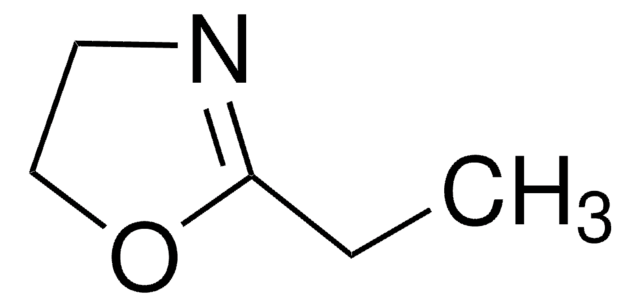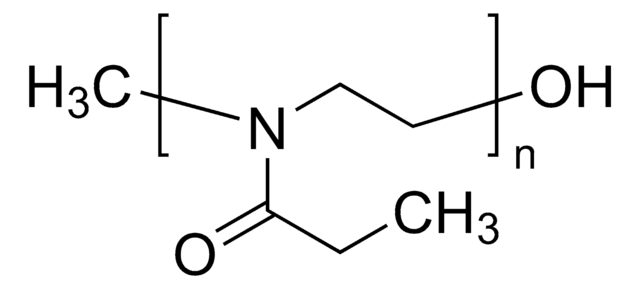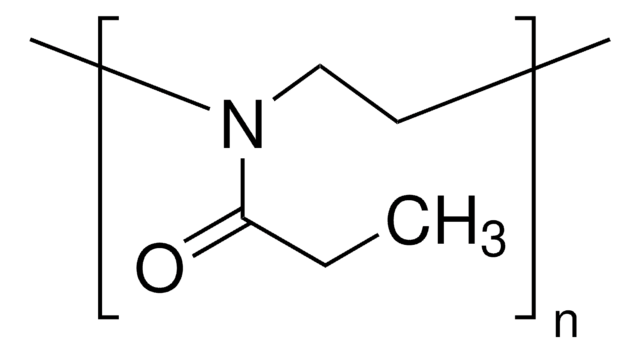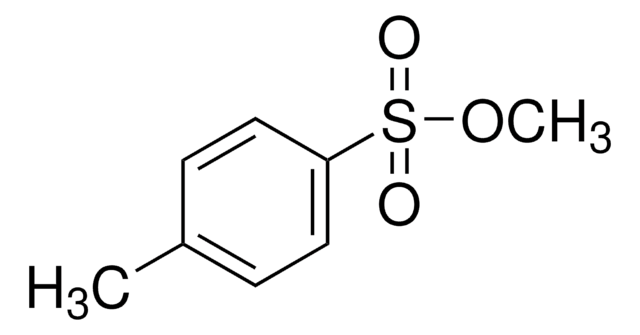372846
Poly(2-ethyl-2-oxazolin)
Synonym(e):
Poly(2-ethyl-2-oxazoline), PEOX, POx, PetOx, poly 2-ethyloxazoline, polyethyloxazoline
About This Item
Empfohlene Produkte
Form
solid
Qualitätsniveau
Mol-Gew.
average Mw ~50,000
Brechungsindex
n20/D 1.52
Viskosität
5-7 cSt, 10 % in water(100 °F)
Übergangstemp.
softening point 110-120 °C (Vicat, ASTM D 1525-82)
Tg 69-71 °C
Dichte
1.14 g/mL at 25 °C (lit.)
PDI
3‑4
InChI
1S/C5H9NO/c1-2-5-6-3-4-7-5/h2-4H2,1H3
InChIKey
NYEZZYQZRQDLEH-UHFFFAOYSA-N
Suchen Sie nach ähnlichen Produkten? Aufrufen Leitfaden zum Produktvergleich
Anwendung
Leistungsmerkmale und Vorteile
Physikalische Form
Lagerklassenschlüssel
11 - Combustible Solids
WGK
WGK 3
Flammpunkt (°F)
Not applicable
Flammpunkt (°C)
Not applicable
Persönliche Schutzausrüstung
Eyeshields, Gloves, type N95 (US)
Hier finden Sie alle aktuellen Versionen:
Besitzen Sie dieses Produkt bereits?
In der Dokumentenbibliothek finden Sie die Dokumentation zu den Produkten, die Sie kürzlich erworben haben.
Artikel
The introduction of polymers into the biomedical field has opened new avenues in tissue engineering, implant design, biosensing, and drug delivery.
We present an article that discusses two applications in particular; first, using these layers as polyelectrolyte membranes to control permeability.
Unser Team von Wissenschaftlern verfügt über Erfahrung in allen Forschungsbereichen einschließlich Life Science, Materialwissenschaften, chemischer Synthese, Chromatographie, Analytik und vielen mehr..
Setzen Sie sich mit dem technischen Dienst in Verbindung.







